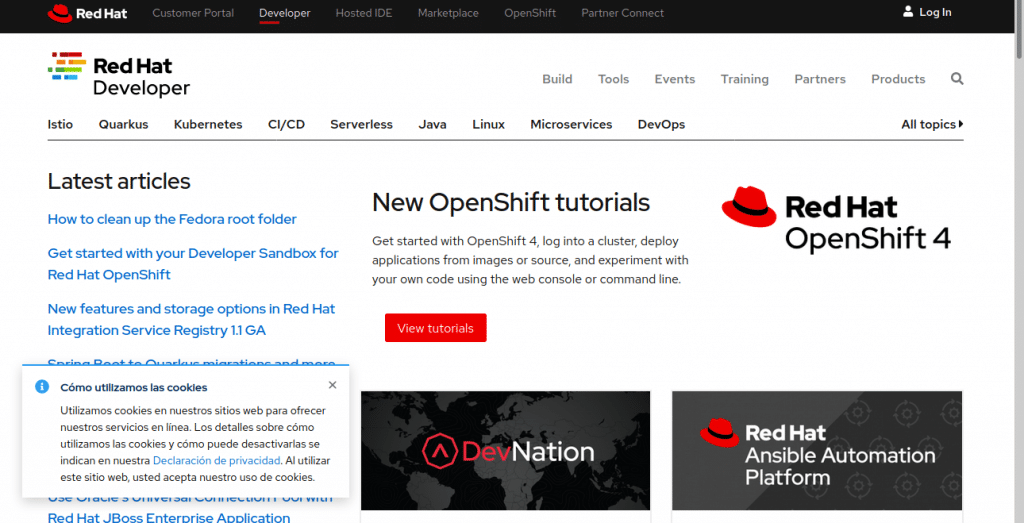Since last week torrents of electronic ink have flowed over the decision Red Hat's decision to stop supporting the traditional CentOS edition in favor of a Rolling Release model built on Fedora.
To tell the truth, I think the outrage it aroused in the community is unjustified. CentOS had two basic uses:
-It was the basis of the cheapest hosting plans. These types of plans are disappearing in favor of solutions based on the offer of pre-installed general use content managers such as WordPress or specific use such as OSCommerce.
-For development and testing of applications that are later installed on computers running Red Hat. The Red Hat Company offers free developer licenses They offer access to distribution and other tools for creating and managing applications. In the Red Hat statement, it was reported that the scope of these licenses will be expanded.
Anyway, let's analyze what other alternatives are available
What to replace CentOS with
I start by making the clarification. This is not a complete list. I am trying not to repeat names that have appeared in other lists, or, in any case, not to repeat arguments. What there is is a deliberate omission. Oracle Linux. Instead of taking care of the CentOS orphans this company should take care of the OpenSolaris orphans.
Fedora
CentOS branch 9 and Red Hat Enterprise Linux will be based on Fedora 34 which will be available next year. Why not go directly to the source?
Of course, computers used in government and commercial organizations require stability and proven software. Hence, CentOS and RHEL are not up to date with the versions of the software they contain. However, Testing the distribution through the Fedora community before releasing it should be sufficient for most cases.
A feature of FedoraServer is modularity. In other words, you can have several versions of the same software without affecting each other or by operating system updates.
Let's say for example that you want to test how WordPress works with the recently released PHP 8, but you can't afford to have your website go offline. You can have the two versions of PHP running in parallel.
The server can be managed and monitored with the Cockpit graphical interface that allows not only to view and monitor the performance and status of the system, but also to deploy and manage container-based services.
The open source domain controller FreeIPA takes care of advanced identity management, DNS, certification services and integration with Windows ™ domains throughout the environment.
Ubuntu
In a way Ubuntu it is CentOS Linux and Red Hat Enterprise Linux on a single distro. Of course, it uses a different packaging system and that means a bigger migration effort than waiting for RockyOS to come out, the CentOS fork, or using a RHEL developer license.
What I mean is that the Use of the distribution itself is free, although a much cheaper commercial support plan is included than that of the Red Hat company.
Ubuntu Server offers tools for using containers, managing cloud services, and creating virtual machines. It has versions of support extended for 5 years that are published every two years.
The use of Snap packages allows you to use applications safely and update them without having to modify the rest of the system.
Arch Linux
Arch Linux it's not on anyone's list. In fact, it does not have a distribution for servers itself, but you have to configure it in the installation. But, I have friends who run all their applications in the cloud with this distribution and they are delighted. Arch Linux is a Rollig Release distribution, which means that it is permanently updated. It has complete documentation and a wide range of repositories with the most complete collection of applications.

You publish the article on the 28th and at least it would not be untimely.
I couldn't disagree more with the arguments and alternatives proposed in this article. It's about having something free with a military-grade quality, but you just don't know anything about it.
Put Arch and not put Debian ... at least it is strange considering that it is for servers and stability should prevail ...
From the article
Debian is on every list on the web
I'm with Camilo. The list of reasons for having CentOS is more than incomplete, in fact it ignores most of the companies that use CentOS. Starting from this unfocused approach, it is no longer worth reading the rest of the article.
Do not take it the wrong way ... I often come to your page but that paragraph is valid for anything ... I do not know what appears in other lists if I come here ... also ... ubuntu and fedora appear in "other" lists (now that I've gone to look for him)… without acrimony.
Do not worry. If people agreed with me on everything it would be very boring.
I keep looking for openSUSE on the list. As an RPM-based distro it seems like one of the most logical options to me. However, SELinux support is one of the things I miss the most.
Fedora is a good option, but if you remove CentOS for not part of Stream which is the next minor version of RHEL (seriously, I do not think it is a problem) and you put Fedora is that you like to live on the edge.